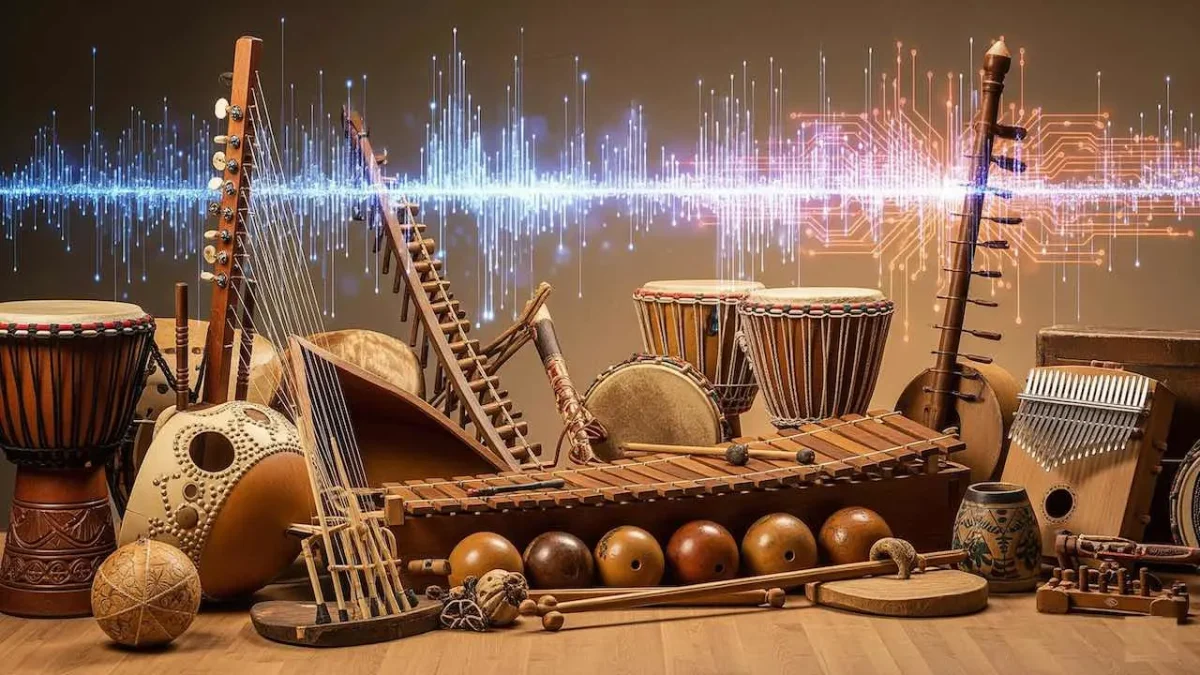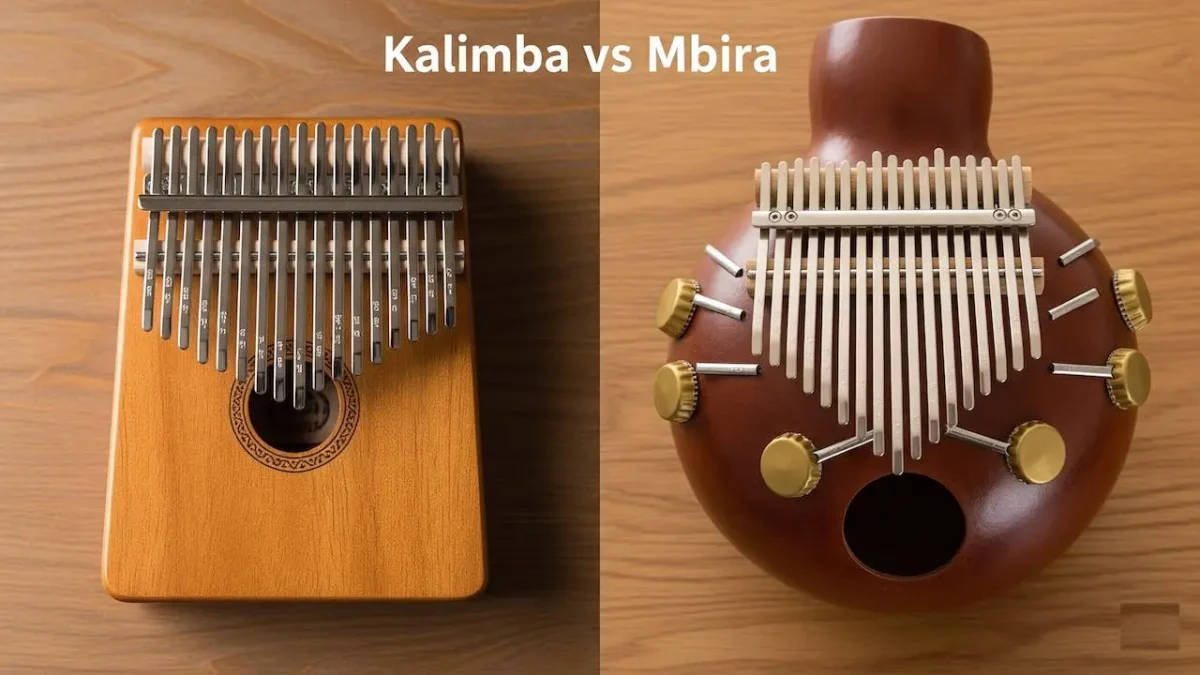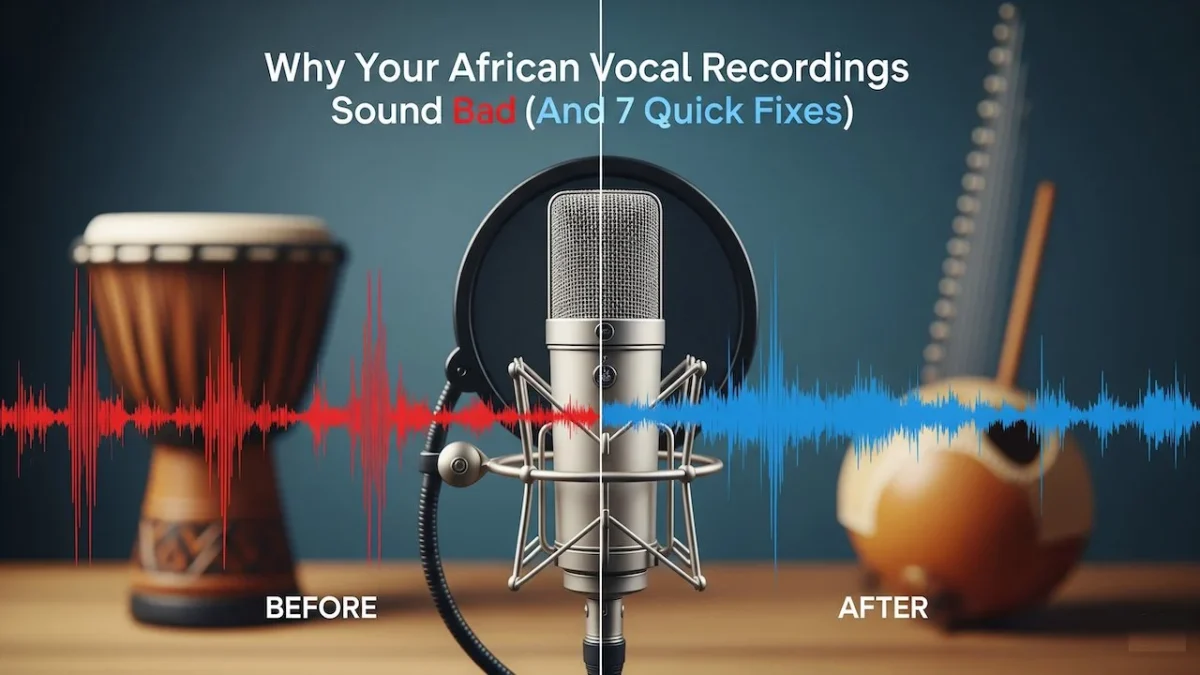
10 Traditional African Instruments That Sound Better Than Modern Synths
Traditional African instruments produce natural harmonics and organic timbres that modern synthesizers struggle to replicate authentically. These ancestral instruments create unique inharmonic overtones and complex resonances that electronic devices cannot fully capture, making them irreplaceable in contemporary music production.
Musicians worldwide increasingly turn to traditional African instruments because they deliver authentic cultural expression and unmatched acoustic properties. While synthesizers can mimic basic sounds, they lack the subtle variations and spiritual connection that comes from hand-crafted instruments made with natural materials.
Why Traditional African Instruments Outperform Modern Synths
Traditional African instruments generate complex acoustic phenomena that synthesizers cannot reproduce. Natural materials like wood, metal, and animal skins create unique harmonic structures through physical vibration patterns that differ fundamentally from electronic sound generation.
Professional musicians and producers often choose authentic African instruments over synth alternatives because they produce:
- Organic pitch variations that add human expressiveness
- Natural sustain and decay patterns
- Complex overtone relationships
- Dynamic response to playing technique
- Cultural authenticity that resonates with listeners
| Traditional Instrument | Synthesizer Limitation | Unique Advantage |
|---|---|---|
| Djembe | Cannot replicate hand technique subtleties | Infinite tonal variations through touch |
| Mbira | Missing inharmonic overtone complexity | Natural metal resonance creates spiritual ambiance |
| Kora | Digital strings lack organic decay | 21 strings create cascading harmonic interactions |
| Kalimba | Electronic plucks sound artificial | Metal tines produce bell-like purity |
1. Djembe: The King of Hand Percussion
The djembe produces 3 distinct primary tones plus countless variations through hand positioning and striking techniques. The djembe is played with bare hands and is known for its deep, resonant sound, creating bass frequencies that synthesizer speakers struggle to reproduce accurately.
Modern producers use djembes in electronic music because the goatskin head responds differently to temperature, humidity, and playing intensity. These natural variables create organic rhythmic patterns that programmed drums cannot match.
2. Mbira: Ancient Thumb Piano With Mystical Properties
Mbira instruments generate inharmonic overtones that create their characteristic ethereal sound. Unlike stringed instruments or air-column instruments like flutes, the overtones of a plucked lamella are inharmonic, giving the mbira a characteristic sound.
Recording engineers often choose mbiras over synthesized plucked sounds because the metal tines create natural chorus effects. The buzzing bottle caps or shells attached to traditional mbiras add percussive elements that digital plugins cannot authentically replicate.
3. Kora: The 21-String Wonder
Kora harps produce cascading melodic patterns through 21 individual strings that interact acoustically in ways synthesizers cannot simulate. the kora, a string instrument with a rich, harp-like sound creates complex harmonic relationships between notes that electronic instruments struggle to reproduce.
Professional musicians prefer koras because each string can be tuned independently, creating microtonal relationships and cultural tuning systems that Western synthesizers lack.
4. Kalimba: Portable Melody Maker
Kalimba thumb pianos create bell-like tones through metal tines mounted on resonant wood. The sound created is very melodic and resonant, very “African” sounding, with natural sustain that varies based on wood density and tine thickness.
Music producers often layer kalimbas with synthesizers because the organic attack and decay characteristics add warmth to digital productions.
5. Shekere: Rhythmic Gourd Shaker
Shekere instruments produce polyrhythmic textures through beaded nets surrounding hollow gourds. The natural gourd resonance creates bass frequencies while the beads generate high-frequency percussion patterns that synthesized shakers cannot match.
Live performers choose shekeres because they respond to subtle wrist movements and playing dynamics that create infinite rhythmic variations.
6. Talking Drum: Communication Through Rhythm
Talking drums replicate human speech patterns through variable pitch control. Players squeeze the drum’s tension ropes while striking, creating pitch bends and tonal inflections that synthesizer envelope filters cannot replicate naturally.
Modern musicians use talking drums in fusion genres because they add conversational elements and cultural storytelling that programmed drums lack.
7. Balafon: Wooden Xylophone With Gourd Resonators
Balafon instruments combine hardwood keys with gourd resonators to create warm, woody tones. Each gourd resonator is tuned to specific pitches, creating natural reverb and harmonic enhancement that electronic reverb units cannot authentically reproduce.
Recording studios often choose balafons over synthesized mallet instruments because the wood grain and gourd acoustics add organic complexity to melodic lines.
8. Udu: Clay Vessel Drum
Udu drums produce both melodic and percussive tones through clay vessel acoustics. The side hole creates pitch variations while the main opening generates bass tones, combining percussion and wind instrument characteristics that synthesizers struggle to simulate.
Electronic music producers incorporate udus because the clay resonance adds earthy textures that digital instruments cannot naturally generate.
9. Ney: Traditional Reed Flute
Ney flutes create microtonal inflections and breath-controlled dynamics through bamboo or reed construction. The natural air column produces overtone series that electronic wind controllers cannot fully replicate.
Jazz and world music artists prefer neys because the breath control and embouchure techniques create expressive nuances that synthesized flutes lack.
10. Berimbau: Single-String Musical Bow
Berimbau instruments generate haunting tones through a single wire string and gourd resonator. The bow stick flexibility and gourd acoustics create pitch bending and rhythmic patterns that electronic bows cannot authentically reproduce.
Capoeira practitioners and world music artists choose berimbaus because they combine melodic, rhythmic, and percussive elements in one organic instrument.
| Instrument Category | Examples | Primary Sound Quality | Cultural Significance |
|---|---|---|---|
| Membranophones | Djembe, Talking Drum, Udu | Dynamic percussion response | Communication and ceremony |
| Idiophones | Mbira, Kalimba, Balafon, Shekere | Metallic and wooden resonance | Spiritual connection and meditation |
| Chordophones | Kora, Berimbau | String harmonic complexity | Storytelling and historical preservation |
| Aerophones | Ney | Breath-controlled expression | Religious and meditative practices |
Incorporating Traditional African Instruments in Modern Music
Contemporary artists blend traditional African instruments with modern production techniques to create authentic fusion sounds. Recording engineers often place traditional instruments prominently in mixes because their natural harmonics cut through dense electronic arrangements.
Professional musicians recommend starting with simpler instruments like kalimbas or shekeres before advancing to complex instruments like koras or talking drums. Each instrument requires specific playing techniques that take time to master but reward players with unmatched expressiveness.
Where to Find Authentic Traditional African Instruments
Authentic traditional African instruments are available through specialized music stores, cultural centers, and direct purchases from African artisans. Quality instruments are handcrafted using traditional methods and materials, ensuring authentic sound characteristics.
Musicians should prioritize instruments made with traditional materials and construction techniques over mass-produced alternatives. Authentic instruments not only sound better but also support traditional craftspeople and cultural preservation efforts.
People Also Ask
African instruments produce inharmonic overtones and natural resonance through organic materials like wood, metal, and animal skins. These materials create complex acoustic interactions that electronic circuits cannot fully replicate.
Synthesizers can approximate basic tones but miss subtle variations like breath control, hand technique, and natural material resonance. The cultural context and playing techniques also cannot be digitally reproduced.
Kalimba thumb pianos are ideal for beginners because they require minimal technique and produce pleasant sounds immediately. Shekeres and simple frame drums also offer accessible entry points.
Traditional instruments add organic textures and cultural authenticity to electronic productions. They provide natural dynamics and harmonic complexity that enhance digital arrangements.
Cultural centers, music schools, and online tutorials offer instruction in traditional playing techniques. Many African musicians also teach workshops and masterclasses worldwide.
Prices vary widely based on quality and authenticity. Beginner instruments start around $30-50, while professional handcrafted instruments can cost several hundred dollars.
Proper storage, humidity control, and regular tuning keep instruments in optimal condition. Natural materials require more care than synthetic alternatives but reward players with superior sound quality.
Most instruments can be amplified using specialized microphones or pickup systems. Contact microphones and small condenser mics work well for preserving natural acoustic characteristics.



